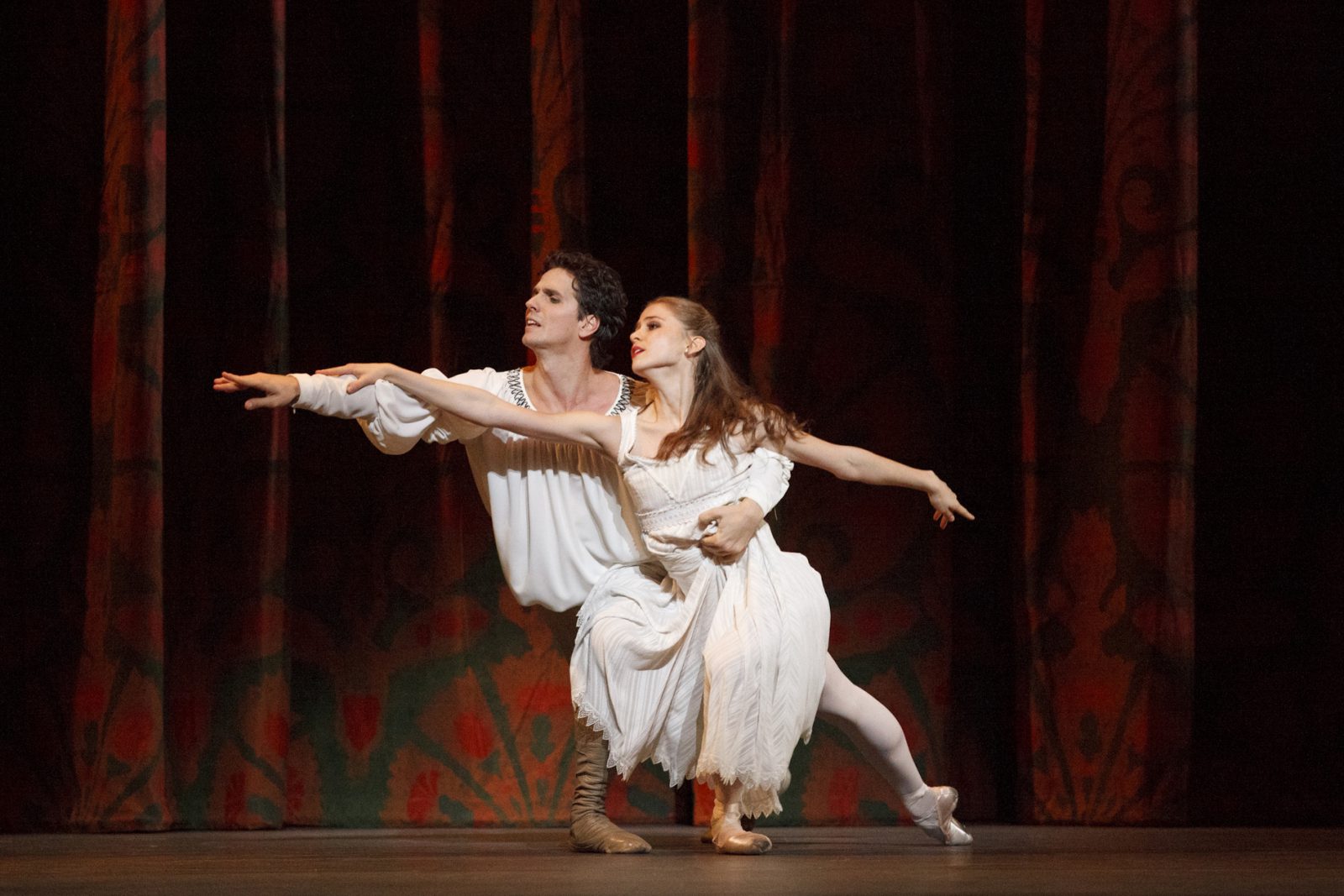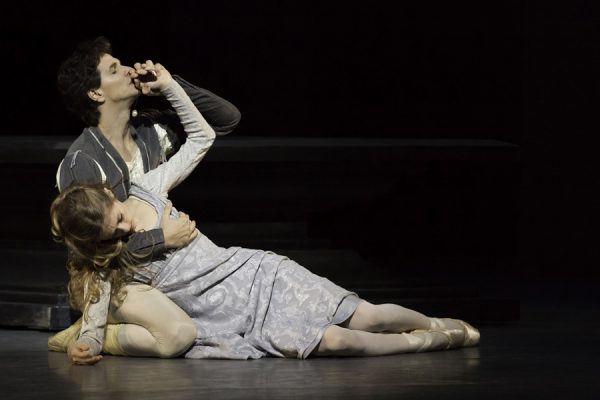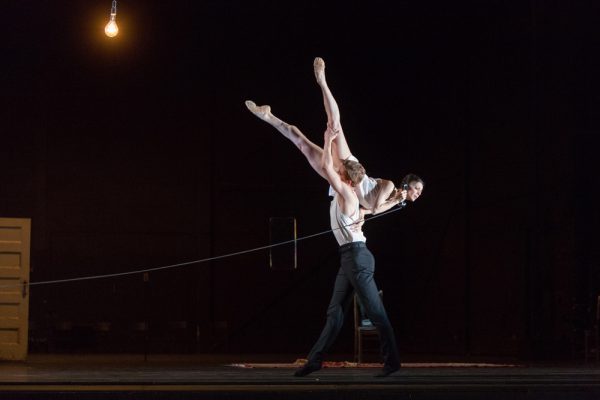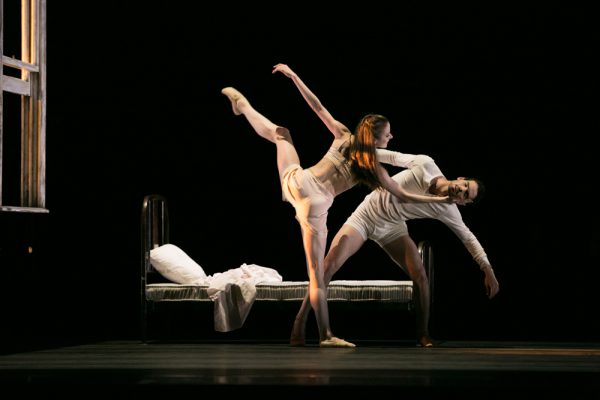In The National Ballet of Canada’s production of Romeo and Juliet, renowned choreographer Alexei Ratmansky distills Shakespeare’s tragic tale of two young lovers with a gentle hand. The production is tastefully contemporary without breaking the mould.
Ratmansky is former artistic director of the Bolshoi Ballet and currently artist-in-residence at American Ballet Theatre. Reviewers of his productions at the world’s most important halls can’t decide between treating him like a staunch traditionalist or a wild radical. At Wednesday night’s opening performance of Romeo and Juliet at the Four Seasons Centre for the Performing Arts in Toronto, Ratmansky showed his capacity for both.
Guillaume Côté and Elena Lobsanova were dramatic and convincing storytellers in the lead roles. Côté plays a poetic Romeo, moving confidently with boyish enthusiasm whether he’s buried in his novel or tossing Lobsanova over his shoulder with love-struck abandon. The two won the audience over when they locked eyes for the first time from across the stage, freezing time ever so briefly before dashing toward each other. Moments later, the memorable balcony scene ended with Côté’s arms and chest held high in triumph after the two tenderly recreated one of Shakespeare’s most iconic moments with a string of intricate leaps and lifts showing their growing passion for each other.
Ratmansky’s vision elevates the elements of contrast in Shakespeare’s story. The comic relief throughout is led by Mercutio, danced by Skylar Campbell in an impressive late substitution. Juliet’s nurse (Lorna Geddes) also brings out humour, while later underscoring Juliet’s affliction in this Shakespearean tragedy. The playful scene in Juliet’s bedroom, with Geddes and a quick and youthful Lobsanova, contrasts with the ballet’s final moments of heartbreak to create powerful theatre.
Ratmansky’s choreography makes full use of every corner of the stage, bringing a constant sense of motion to every scene. No emphasis on classical miming here.
Unlike Ratmansky’s occasionally contemporary choreography and gentle tweaks to Shakespeare’s story, Richard Hudson’s sets and costumes were much more traditional. True to the text, the ballet takes place in early Renaissance Verona. The striking market square set, in perfect burnt orange, effectively renders an Italian piazza in the setting sun. Meanwhile, the costume designs reflect the colour palette of the Renaissance masterpieces.
From the pit, Music Director David Briskin had the orchestra in fine form for the performance of one of ballet’s most iconic and colourful scores. Prokofiev’s music vividly tells the story and is just as moving as the dancing onstage. The strings were full bodied and strong, and the brass played with a precise crispness, while Briskin successfully tugged the ensemble forward to keep up with the movement onstage.
Commissioned to mark the National Ballet’s sixtieth anniversary in 2011, Ratmansky’s Romeo and Juliet is an important production for the company and has played London, Los Angeles and Ottawa in addition to acclaimed runs in Toronto.
The Toronto Star has called the production “bold”, while London’s Financial Times called it a “posturing charade.”
Ratmansky’s production offers a respectful nod to the past and a provocative glimpse toward a future of storytelling where formality takes a backseat to real drama. His keen sense of tradition allowed him to subtly personalize Shakespeare’s story, which surges to conclusion with a powerful short dance between Romeo and Juliet before Romeo succumbs to the poison. Ratmansky’s gently contemporary hand on the classical tradition shines a light on the human element in this story. And that’s what great ballet is meant to do.~
The National Ballet of Canada performs Romeo and Juliet from November 25 through December 5 and March 16 through 20 at the Four Seasons Centre for the Performing Arts, Toronto.
Tagged: Ballet, Emerging Arts Critics Programme, Performance, Sergei Prokofiev, Shakespeare, ON , Toronto






